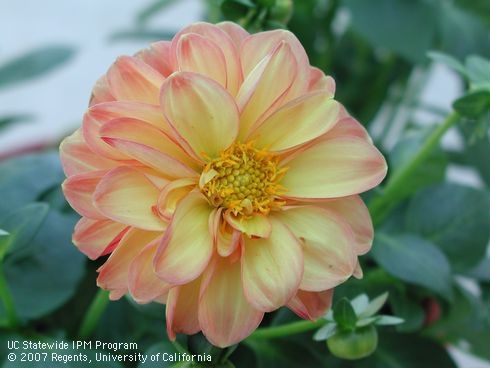February Chores
By Andrea Peck UCCE Master Gardener
While February marks the last 28 days of winter, spring lays in wait, ready to pounce. This is not the time to neglect your garden. Redolence will not pay off. Beneath that sparse and weedy winter garden is activity and potential. Take advantage of it by planting bulbs such as amaryllis, caladium, calla lily, canna, dahlia, daylily, bearded and Dutch iris. Inland gardens can plant gladiolus and tuberose.
Early sowing has early rewards. Try alyssum, columbine, cosmos, hollyhock and lupine. A smattering of wildflower seeds will bring color and pollinators.
Foodies might try parsley, endive, leek, lettuce and turnips. Don't forget a good helping of garlic, onion and shallot sets. For coastal gardens, beets, carrots, kohlrabi and snow peas are good options. Inland gardeners might start seeds indoors or use a cold frame. Broccoli, Brussel sprouts cabbage and cauliflower are timely choices. While you're digging around, transplant artichoke crowns, asparagus crowns and rhubarb rhizomes.
Plant camellias and azaleas, just be sure to use and acid soil mix, don't plant too deeply and mulch to keep roots cool. It's not too late to plant roses and deciduous fruit and nut trees as well as berries and grapes. Prune dormant or damaged trees and shrubs that bloom in summer and fall. Trim rose bushes, grapes and berries before budding. Apply final dormant spray for stone fruit trees. Shape your fuchsia before it forms leaves. Deadhead cool season flowers to encourage bloom.
Provide nutrients by utilizing slow-release fertilizers on groundcovers, perennials, shrubs and trees. Work bonemeal, cottonseed meal or composted manure into the top three inches of soil. Citrus trees prefer a light fertilizing. Use balanced fertilizer for fruit trees. Fertilize after rains to prevent runoff into storm drains and creeks. Native and Mediterranean plants do not need fertilizing.
Perhaps most important in this time of gaining momentum is controlling weeds and pests. Set a schedule for weeding. Contain future outbreaks by yanking weeds before they seed or flower. Use strong blasts of water to control aphid populations, trap earwigs in rolled-up newspaper and keep your eyes peeled – spring is on its way.
